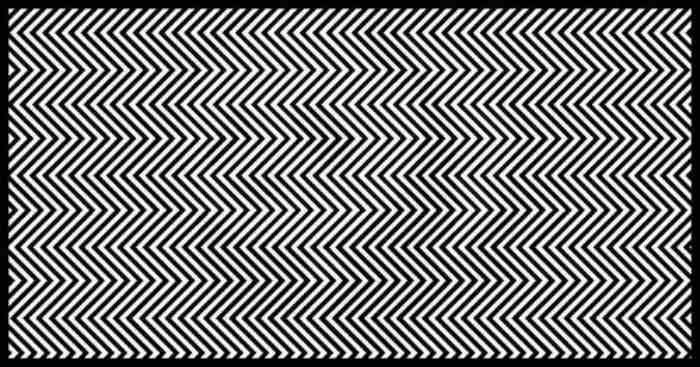There’s an image that has recently gone viral, with claims that only 1% of people can find the animal hidden within it. Can you spot it? It’s a real brain teaser, and if you’re struggling, you might need to take a break and come back to it later.
Ready for Round Two?
Have you ever heard of the McCollough effect? It’s a fascinating optical illusion where, after staring at a colored grating (alternating lines), your brain starts to see colors like pink or green when looking at black-and-white lines.
To experience the effect, stare at the center of two colored “induction images” for several minutes, switching back and forth between them. It works best with green or red lines. Afterwards, when you look at vertical black-and-white lines, you might see red, green, or pinkish hues.
Tilting your head 90 degrees can change the intensity of the effect. Rotating the induction images and staring at them again might even reverse it. The longer you stare at the induction images, the longer the effect lasts – potentially for hours, days, or even months.
What’s Causing the McCollough Effect?
Named after its discoverer, US psychologist Celeste McCollough Howard, the effect is known as a “contingent aftereffect,” an illusion that affects your brain for an extended period.
Numerous studies have explored this phenomenon. In 1975, researchers tested five groups of 16 people and found that one group experienced no decrease in the effect after five days. For four groups, the effect remained stronger than half its original intensity even after 2,040 hours – nearly three months.
How to Test the Effect
You can try the McCollough effect yourself with the images below. Be aware, though, that it might affect your vision for a while, especially when you see vertical or horizontal lines. However, it is generally considered harmless.
What Causes This Illusion?
There are three main theories:
- Neurons in the visual cortex might be involved.
- Your brain may be trying to color-correct the world and gets stuck.
- It could be a withdrawal symptom from the absence of color.
A 1995 study examined a patient with significant brain damage who could see color but little else. Even